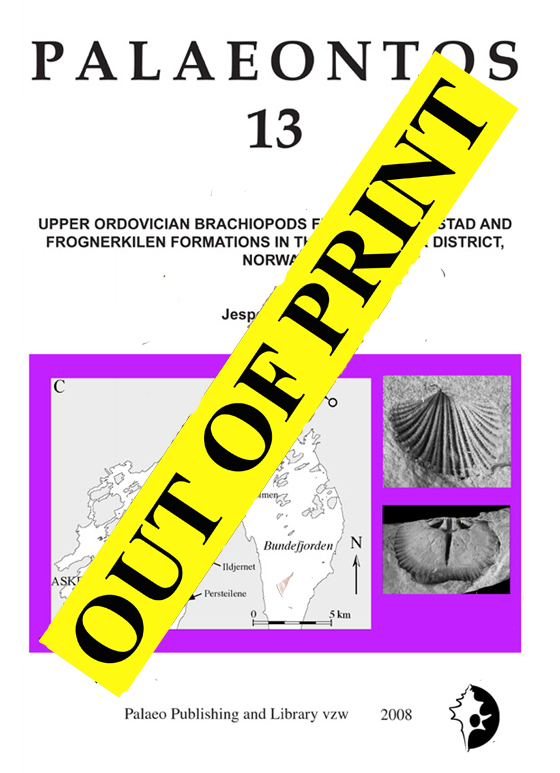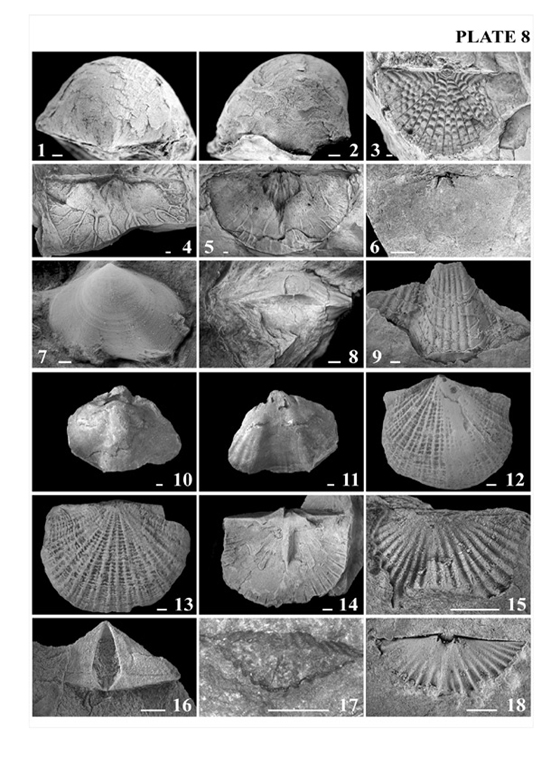
|

|
PALAEONTOS 13Price: non-members: 40 euros, members:. 35 euros Hansen J., 2008, Upper Ordovician brachiopods from the Arnestad and Frognerkilen formations in the Oslo-Asker district, Norway. ISSN: 1377-4654(99 textpages, 26 textfigures, 52 tables, 12 plates)Summary: Investigations of the brachiopod fauna from the Upper Ordovician Arnestad and Frognerkilen formations in the Oslo-Asker district of Norway have expanded the knowledge about the brachiopods occupying the western margin of Baltica during the Late Ordovician. The fauna comprises 57 species representing 15 linguliformean, 3 craniiformean and 28 rhynchonelliformean genera, including one new linguliformean genus, Osloellan. gen., and 15 new species representing all three subphyla. The inarticulate fauna in the studied interval generally shows affinities to the deeper part of the Floian ElkaniaAcrotretaCommunity, which characterized offshore muddy environments in the Lower to Middle Ordovician of Bohemia. Though the taxonomic diversity is low to moderate, this inarticulate fauna comprises many ecological groups ranging from the dominant endobenthic to the epizoan lifestyle. The ecospace utilization of the rhynchonelliformean brachiopods is moderately diverse and strongly resembles that of older non-Baltic carbonate platforms. The most striking difference is the dominance of the liberosessile strophomenides, which appear to have diversified and expanded into more distal environments since Dapingian time. Changes in diversity and composition of brachiopod guilds and taxa suggest an overall shallowing in the Oslo-Asker district during the Haljala end Keila. This shallowing resulted in a major influx of more shallow-water taxa and coincided with the main breakdown of provinciality between Baltica and Avalonia during the Keila. Statistical analyses suggest that though the taxa from Avalonia apparently first appeared in the east Baltic, a greater proportion of the Baltoscandian taxa occurring in the Oslo Region spread to Avalonia resulting in greater affinities between these two provinces than between Avalonia and the other parts of Baltica. |
|
ORDER INFORMATION:please contact us at: palaeontos@gmail.com |
|